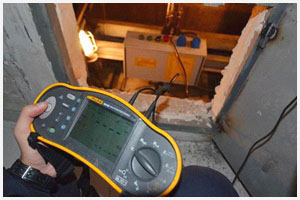
Steel rope elevators are the most preferred elevators, and instead of being pushed from the bottom, they are pulled up and down using steel ropes. The steel ropes are connected to the elevator car by a system of pulleys, and when these rotate, the ropes move.
The pulley of the elevator is connected to an electric motor and according to the forward or reverse rotation of the motor, the steel ropes pull up or lower the cabin. The reel, electric motor and the system controlling them are located on the body of the elevator.
The weight outside the elevator car and the elevator car move along the rails on the sides along the elevator's travel path. These rails prevent the weight and cab from swinging back and forth. At the same time, these rails work together with security systems to stop the cab in an emergency.
Elevators are not dangerous mechanisms if the maintenance is done properly and regularly, but the Elevator Maintenance and Operation Regulation has been issued so that the elevators do not endanger the safety of people and property under certain conditions. This regulation covers the operation, maintenance, periodic inspections, warranty conditions and the rules that must be followed for after-sales services.
The purpose of the Elevator Operation, Maintenance and Periodic Control Regulation is to ensure the use of elevators used for the carriage of people and / or cargoes in a manner that does not threaten the health and safety of the environment, people and living things after they are placed on the market and put into service; operating, maintenance and annual controls.
In addition, any inconvenience reported by the inspection personnel or noticed by the inspection personnel, or if there is any doubt about the suitability of the elevators to be examined, or if the elevators do not comply with the specified description, or will prevent the inspection team and the inspection from being inspected during the inspection. or in case of any unintended development, the examination shall be terminated immediately.
The maintenance, repair and periodic inspections of the Regulation (Annex 3) are shown in the group of elevators, lifting and conveying equipment. Accordingly, inspections and inspections must be carried out by mechanical engineers, machine technicians or high technicians. In addition, the electrical parts of the elevators should be checked by authorized persons.
Before starting the inspection, the inspection team inspects the elevator room to be inspected for security measures and checks if there is a sign indicating that the elevator has been inspected. If unit elevators are to be validated, the inspections and tests defined in the inspection and tests section of Annex I of the 2014 / 33 / EU Lift Regulation and, if applicable, the relevant harmonized standard shall be applied and recorded in the relevant inspection control report.
If annual inspections of elevators are to be carried out, the inspections of the Ministry of Science, Industry and Technology shall be examined according to the checklist in the communiqué on the procedures and principles to be applied by the A-type inspection institutions to be involved in the annual inspection activities of the elevators. The Inspection team will perform all tests in the Final Inspection Inspection Training and Annual Periodic Inspection Inspection Training according to the standards applicable at the time the elevator is manufactured.
In addition, the Regulation on Health and Safety in the Use of Work Equipment describes the conditions that must be complied with for the safe and healthy use of elevators. Accordingly, man and load-bearing elevators should be checked at least once a year unless another time is stipulated in the relevant standards.